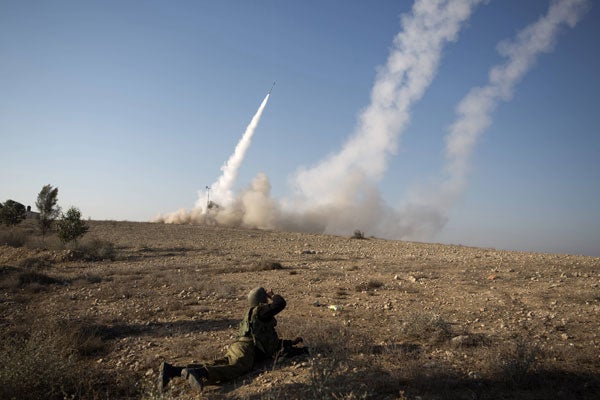The Iron Dome rocket and mortar defense system shatters arguments against missile defense, writes Juan Williams, a Fox News political analyst, in his recent op-ed.
He is correct: The system not only works and provides protection for civilians, but also allows the Israeli leadership to take more time to decide on the most appropriate action, ideally one that would prevent an escalation.
Without the system, the Israeli government would be under extreme pressure to conduct retaliatory offensive operations against its enemies. The Iron Dome allows time and space to plan an operation that has the highest likelihood of preventing escalation.
On Wednesday, The Heritage Foundation will host a public event titled “U.S.–Israeli Missile Defense Cooperative Programs: What Is Next?” It will examine missile defense policy implications and lessons for the U.S.
The most important of these lessons is that the missile defense criterion of cost effectiveness has been defined too narrowly in the United States. For decades, critics of missile defenses asserted that the cost of an interceptor must be cheaper than an incoming missile. This approach is flawed, because it does not take into account the value of a defended area or the costs associated with repair efforts if a missile or rocket hits its target.
Recently, Yousaf Butt, a critic of the U.S. missile defense program, asserted that the success of Iron Dome does not prove that a U.S. missile defense system works. While the technologies of Iron Dome and the U.S. missile defense programs are different, the U.S. missile defense program has a successful track record on its own.
The Iron Dome system also proves that missile defenses do not need to work 100 percent of the time to provide benefits to a nation under attack. Iron Dome is able to determine the trajectory of incoming missiles and rockets and does not intercept those headed for unpopulated areas.
Butt also asserts that “cheap inflatable balloon decoys” make “it impossible to distinguish the decoys” from incoming missiles. This assertion is only Butt’s fantasy. To launch decoys that would survive the extreme pressures that a missile endures during a launch and fool different systems that track ballistic missiles’ signatures (e.g., thermal or infrared) requires a very sophisticated technology that only the most advanced ballistic missile powers—such as the United States, Russia, and China—possess.
The Iron Dome system shows that missile defenses make significant contributions to the political leadership and civilian populations. In a world where ballistic missile technologies are spreading, the U.S. should develop a layered ballistic missile defense system of its own. The Western way of life depends on it.





























